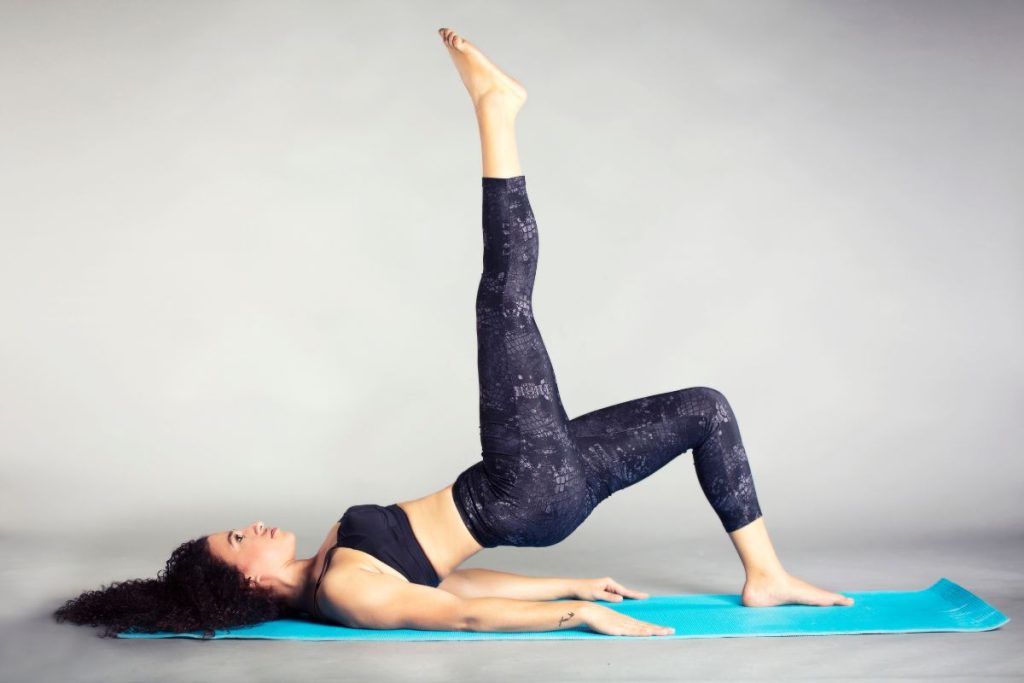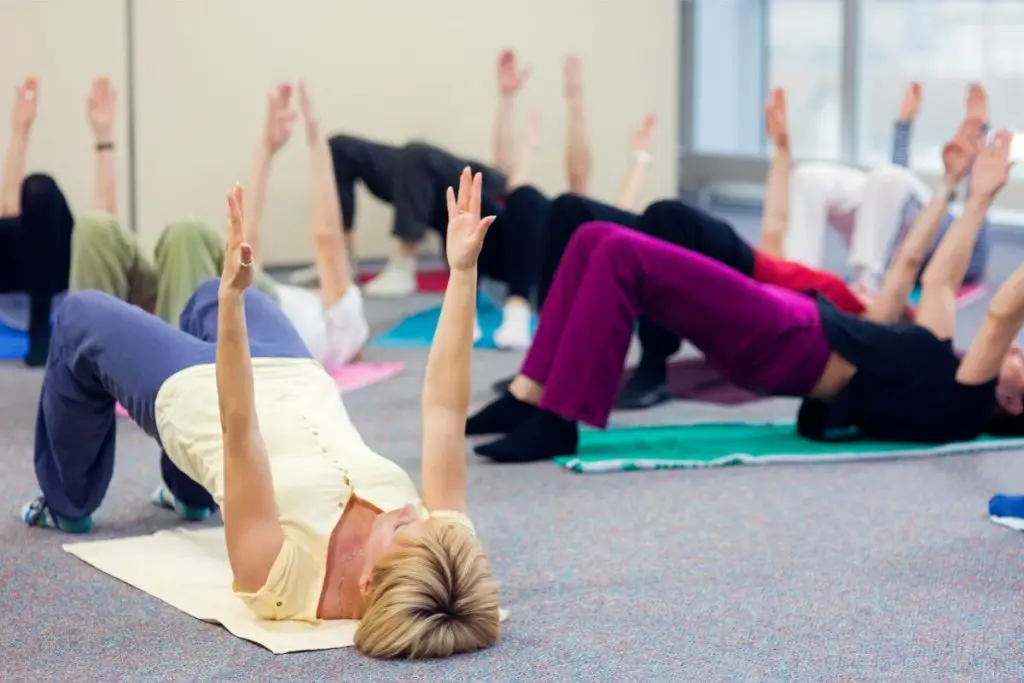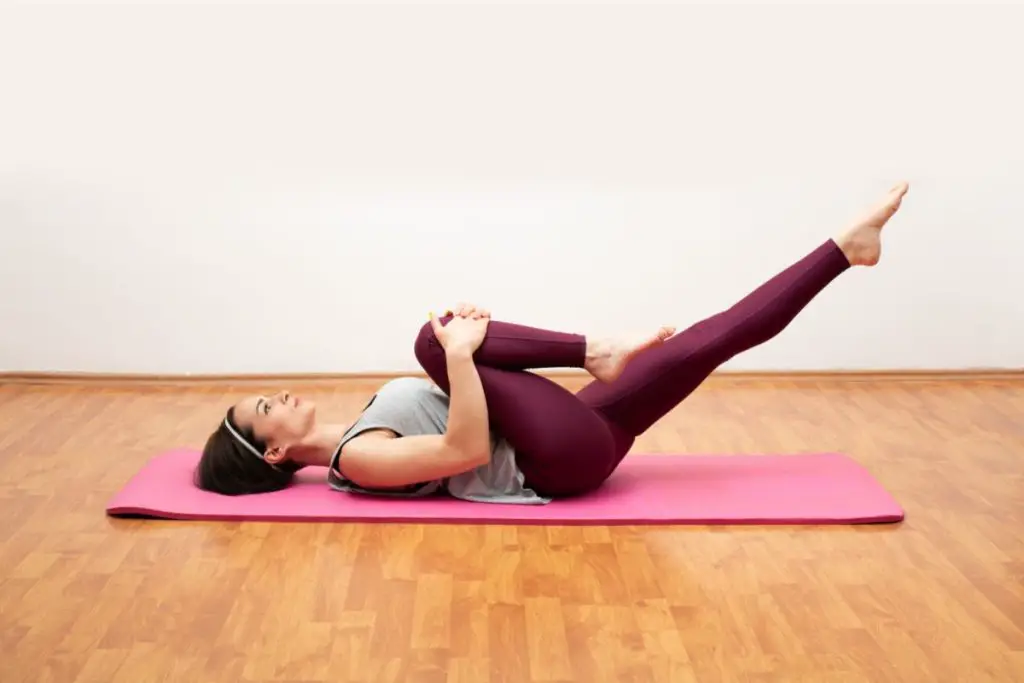Exercise

Mat Pilates For Beginners: What You Need To Know
Pilates has become more and more popular in the last few years but it’s much more than a healthy trend in pop culture.
While Pilates gives you a good workout for your core strengthening muscles and tendons, it also helps to support the structure of your body with mobility, strength and flexibility.
And if you think you need to have a certain fitness level for Pilates, then you will find yourself corrected. Pilates is great for everyone, regardless of ability, gender or age.
If you are new to Pilates or you are just curious what this gentle workout has to offer, then read on.
We’ll take a look at whether Pilates is suitable for beginners and what you need to get started on your Pilates journey.
Is Pilates Good For Beginners?
Yes, Pilates is definitely a healthy exercise workout for beginners, with similar effects to Yoga and Qi Gong.
While many marketing videos for Pilates show more advanced exercises, it’s important not to let these intimidate you.
Just like with any workout, Pilates is all about progressing slowly, and it is essential that you don’t jump straight into the advanced workout as your body needs to get used to the gentle basic exercises first.
It may be surprising but even athletes that are doing Pilates started with the basics, and also more advanced Pilates practitioners often like using beginner exercises to strengthen their foundation.
If you are new to Pilates, it can be useful to join a Pilates class for beginners. The teacher will then introduce you to some of the more basic exercises.
Plus, there is someone who will show you how to do the exercises effectively and safely for your beginner level.
Whatever way you start with Pilates, make sure that you listen to your body. You should only do as much as you can and you’ll slowly progress with your Pilates over time.
What You Need To Know Before You Start With Pilates

If you are interested in Pilates, it’s a good idea to learn more about Pilates and its fundamentals.
One of these foundation stones is that Pilates is a journey, and it takes consistent and regular workout to strengthen your body and mind.
Pilates essentially works on your entire body and each body part will be activated. Another important concept of Pilates is that of movement.
There are a large range of different motions that you will learn with Pilates. Beginners start off with smaller movements, and they will increase over time.
Another two important principle of the different Pilates methods are precision and control. It’s important to always execute an exercise in the right way.
This will not just prevent injuries but your body will eventually benefit from it long term.
In addition, another core principle of Pilates is breathing. The breath is not just something we do naturally every moment of our life.
Pilates uses specific breathing exercises to improve your lung capacity, and it is the foundation for any movement in different exercises.
As a rule of thumb, Pilates breathing is based on three dimensions, so you breathe through the diaphragm and your rib cage which then allows you to strengthen your deeper core muscles.
These muscles include all muscles around your pelvic floor, lower back, glutes, abdominal muscles as well as inner thighs and hips.
There are quite a few unique terms in Pilates which your instructor will teach you. Just like with every workout, Pilates is unique and it has its own language.
Starter Equipment For Pilates Beginners
Pilates is quite a basic form of exercising, so there isn’t much gear you’ll need to get started. It’s a good idea to bring a mat or exercise on a soft surface.
Saying this, it should not be too soft as you will still need a firm grip, and you shouldn’t slip on the floor.
Some advanced practitioners prefer to do Pilates without a mat or just a Yoga mat. However, yoga mats are typically much thinner than Pilates mats which are specifically designed for Pilates exercises.
If you are not sure yet if Pilates is right for you and you don’t want to invest in a thicker mat, then you can also put a towel or blanket over a yoga mat.
Just make sure that you don’t slip and you have enough grip to firmly stand on your surface.
You will find that, as you progress with yoga, your teacher may introduce different props.
This equipment usually is intended to support your body and it also increases the difficulty level of some exercises.
Props such as light weights, the magic circle and a mini ball can also be a great way to add variety to Pilates exercises.
A Gentle Workout Plan For Beginning Pilates
One of the first exercises you start with in Pilates is focusing on your breath and working with your breathing.
You may not notice it every moment of the day, but your breath controls a lot of other bodily functions.
This means that when you work with your breathing, you can synchronize the breath with your exercises making your core engagement more efficient.
While there’s no hard and fast rule how often you need to exercise, it’s important that you do it consistently.
Just find the right rhythm for you and your body and integrate your workout into your routine.
You will quickly feel what your body tells you over time, and you can tune in with your body to find out when you need rest.
Tips For Pilates Beginners

Starting a new exercise routine sounds challenging but it doesn’t have to be. The first step as a beginner in Pilates is to take a class.
This gives you a feeling for all the different movements and exercises in Pilates. Plus, you can also find out if this is the right type of workout for you.
There are also different types of Pilates. They all work on all body parts but they use slightly different exercises.
Another important aspect to be aware of as a beginner is that there are also individual classes offered for different types of people.
For example, there are classes for pregnant women, older adults and people with low bone density or back injuries.
If you spot a Pilates class that could be suitable for you, it’s worthwhile taking a look as these exercises can give you specific advice on how to move safely without causing injuries.
As You Progress With Pilates
As you make progress on your Pilates journey, there are plenty of exercises that you can try in more advanced classes or online courses.
You can try more challenging exercises or just a different type of Pilates, such as reformer Pilates which uses a Pilates machine.
You may even find that some Pilates studios also offer different types of classes and equipment that will challenge you more.
Final Thoughts
Pilates is a great way to introduce a gentle workout into your life. With its principle of continual progress, you don’t have to worry about starting with difficult exercises.
Pilates allows you to start slow and advance over time, so you get the most out of your workout.




